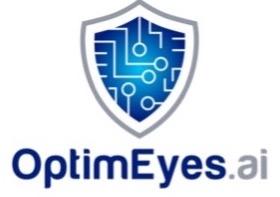With the support of RiskOpsAI™’ risk modeling, measuring your suppliers’ or distributors’ ESG maturity can insure you from supply chain disruption, financial penalties or sanctions, accountability towards human rights violation, environmental pollution or unethical business practices that devolve upon you, irrespective of the commercial construct of your supplier arrangements.
Per research from consulting firm McKinsey, more than 90 percent of S&P 500 companies now publish ESG reports in some way, shape, or form, as do approximately 70 percent of Russell 1000 companies. In multiple areas, reporting ESG elements is either mandatory or under active consideration—in the United States, for instance, the Securities and Exchange Commission is considering new rules that would require more detailed disclosure of climate-related risks and greenhouse-gas (GHG) emissions, with additional regulations that govern other facets of ESG pending. But how robust is the correlation between a firm’s ESG rating and its commitment to a greener world?
Most disclosures and ratings center around Scope 01 and Scope 02 emissions of the firms, going easy on Scope 03 emissions. These are emissions directly under the control of the organization, relatable to its core operations. Scope 1 covers direct GHG emissions generated from fossil fuel used in all production and operations of facilities owned or controlled by the firm. Scope 2 emissions account for consumption of purchased electricity, heat, or steam. Scope 03 emissions relate to carbon footprint from consumption and distribution of goods and services in upstream and downstream supply chain. Research by S&P Global Trucost highlights that retail, manufacturing and financial services firms could be absorbing upward of 90% of their total environment risk from their supply chain. It is here that the devil lay.
The glossy ESG ratings flashed in annual reports are heavily influenced by Scope 1 and Scope 02 emission levels. Good ESG Ratings bring in “greener” investments and positive endorsement from shareholders, including public at large. However, a good ESG rating does not necessarily imply a lower ESG Risk. A closer look under the hood would reveal the actual quantum of ESG risk being carried by the organization. Some of the unreported and undisclosed ESG Risk despite a top ESG rating could arise because of:
- Pollution offshoring that protects the ESG Ratings on home soil, without eliminating the ESG Risk in the global supply chain
- Limited investment in green technologies, which are often too expensive, compensated by rising share of (non-greener) imports
- GHG emissions absorbed into the firm on account of upstream suppliers of goods and services
- Low ESG maturity with third parties emanating from transactional relationships centered around short-term cost savings at expense of commitment to environment.
- Arbitrage in environment legislations and controls in supplier jurisdictions
- Disparity in environment consciousness across the board, customer and supplier profile
- Higher cost of capital and/or lower credit ratings, owing to nongreen technologies and practices
- Conflicting interests between procurement and sustainability teams.
- Policies typically focus on legal compliance only.
RiskOpsAI™’ ESG Risk Solution helps you with generating your Third Party ESG Risk Profile in discovering partner ESG vulnerabilities and threats before they enter your precincts. Positive and negative screening of your third parties enables you to reward compliant suppliers, invest in sustainable sourcing and a responsible dissemination cum disposal of your goods and services, truly reflective of your ESG Risk.
